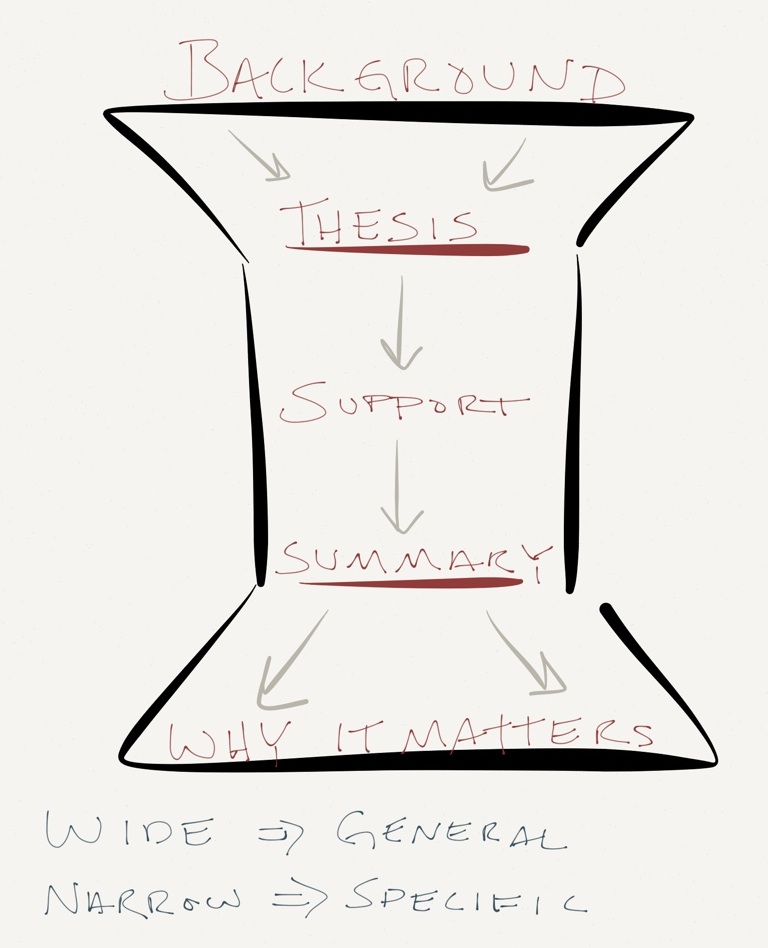Consider this chart on the shape of an essay:

Source: The Essay Structure of Video Editing
The writer of this page calls this shape “the hourglass” and it’s worth remembering. The main point to remember is that you should start your essay with a general idea: what is the broad subject of the essay? Then, you should gradually get narrower and narrower until you have your thesis . Consider this diagram:
Faithfulness— Introduce quotation that defines faithfulness— the story of Romeo and Juliet has characters who are faithful—The characters who are faithful are Juliet, the Nurse and Mercutio.
The last piece here is your thesis, but you didn’t get here without leading the reader from your broad ideas to the narrow ones.
Before you get to your thesis, you should have dealt with any simple definitions that are necessary, unless you intend to devote a whole paragraph to the definition in the body of your essay (which you probably won’t).
The conclusion is like the opening, but in reverse. It should be longer than the opening because you now have something to say. Here are some rules:
- the conclusion is your last chance to make the case for your point. You must use the conclusion to recap the highlights of your argument.
- as a result, it is going to be longer than your introduction, but not as long as a body paragraph
- never include new ideas or different arguments that you haven’t already introduced
- begin with a version of your thesis. Please be a bit original!
- revisit the main claims of your proof.
- finish with a final thought that generalizes the wisdom you have learned from these characters and this story: “Novel X has taught this idea…,” “Next time in similar situations, one could surmise…”
- the last words of the essay should be your own, even if you do revisit a quotation
One last idea: Cyclic return
Remember the work you did in your opening? how you slaved over the opening lines to make them intelligent? Don’t waste that intellectual brain power. Come back to that idea at the end of your conclusion.
